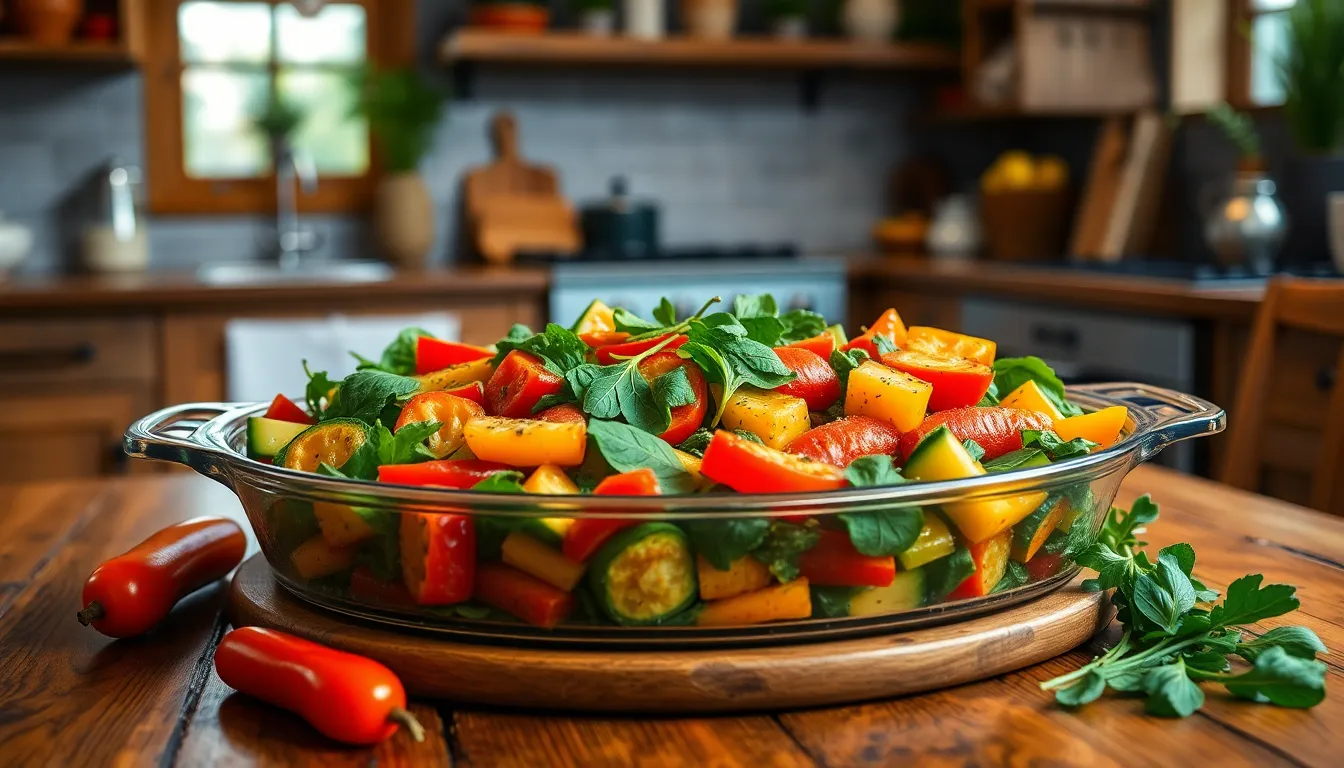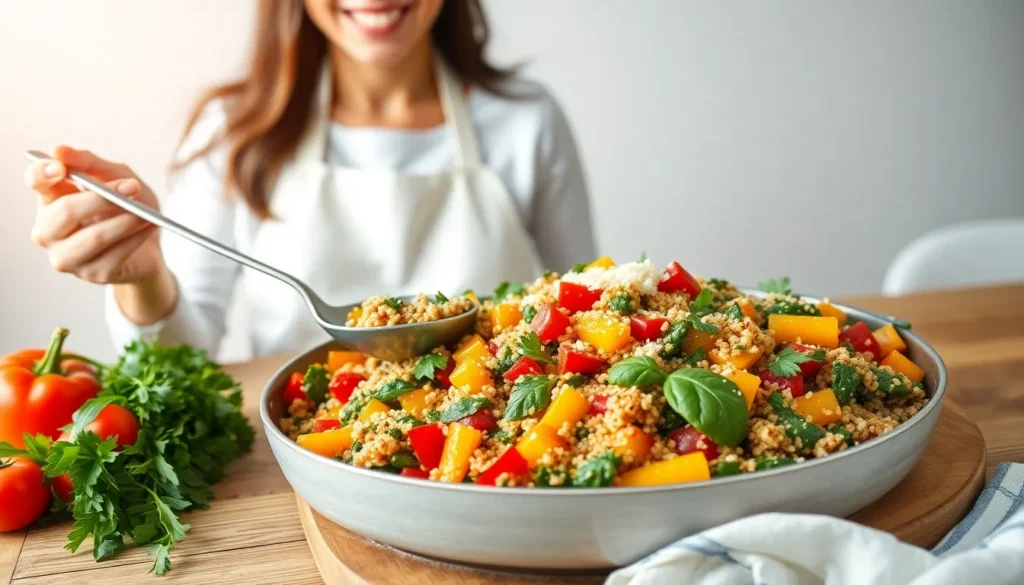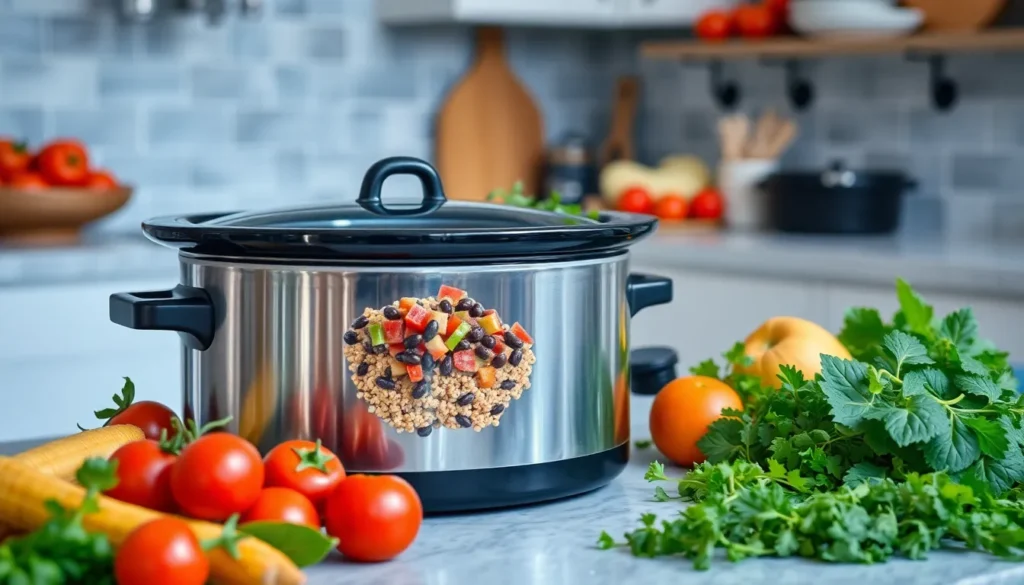When it comes to healthy eating, casseroles often get a bad rap. They’re not just for potlucks or family gatherings anymore. Packed with vibrant veggies and bursting with flavor, these dishes can transform any meal into a nutritious feast. Who knew that a mix of broccoli, bell peppers, and sweet potatoes could be so mouthwatering?
Healthy Vegetable Casserole Recipes
Casseroles offer versatility and flavor, providing numerous healthy options. Loaded with vegetables, these recipes cater to diverse tastes and dietary needs.
Colorful Vegetable Medley Casserole
Combine bell peppers, zucchini, carrots, and onions for a vibrant combination. Layer the vegetables with whole grain pasta and a light tomato sauce. Bake for 30 minutes at 375°F, resulting in a wholesome dish brimming with nutrients.
Spinach and Mushroom Casserole
Saute mushrooms and spinach in olive oil before mixing them with quinoa and low-fat cheese. The hearty blend bakes at 350°F for 25 minutes, creating a rich and satisfying meal. This recipe highlights the protein and fiber content from quinoa.
Broccoli and Cauliflower Cheese Bake
Steam broccoli and cauliflower, then fold them into a mixture of Greek yogurt and shredded cheese. Bake at 375°F for 35 minutes until golden and bubbly. This dish provides calcium along with essential vitamins.
Ratatouille Casserole
Incorporate eggplant, tomatoes, and zucchini into a casserole with a hint of Italian seasoning. Layering these vegetables creates a fragrant, filling meal. Roast for 40 minutes at 375°F, ensuring flavors meld beautifully.
Sweet Potato and Kale Casserole
Layer sweet potatoes with fresh kale and black beans. Add a sprinkle of cumin for an added kick. Bake at 400°F for 30 minutes, producing a rich source of vitamins A and C, along with protein from black beans.
Each recipe showcases a variety of vegetables that transform ordinary casseroles into nourishing meals. These nutritious options are perfect for any occasion, delivering both flavor and health benefits.
Benefits of Vegetable Casseroles

Vegetable casseroles provide numerous health advantages. Rich in vital nutrients, they serve as an excellent choice for wholesome meals.
Nutritional Value
Vegetable casseroles deliver essential vitamins and minerals. Each casserole brims with a variety of vegetables, ensuring a diverse nutrient profile. For instance, bell peppers offer vitamin C, while spinach provides iron. Whole grains used in some recipes contribute fiber, promoting digestive health. Low-fat cheeses enhance protein content, further boosting the meal’s nutritional benefits. Nutrient density is a key aspect, making vegetable casseroles satisfying and beneficial for overall wellness.
Dietary Preferences
Vegetable casseroles cater to various dietary needs. They easily fit vegetarian and vegan diets, especially when incorporating plant-based proteins like beans or lentils. Gluten-free options arise by substituting whole grain pasta with gluten-free grains such as quinoa or brown rice. These versatile dishes allow for customization, addressing specific nutritional goals. Individuals seeking low-calorie meals can adjust ingredients to create lighter versions without sacrificing flavor. Thus, vegetable casseroles accommodate diverse culinary preferences while promoting healthy eating practices.
Easy Healthy Vegetable Casserole Recipes
Healthy vegetable casseroles offer simple and delicious meal options. Here are two standout recipes to try.
Recipe 1: Quinoa Vegetable Casserole
Quinoa vegetable casserole combines quinoa with various colorful vegetables. Bell peppers, zucchini, and carrots provide vibrant flavors and nutrients. Adding low-fat cheese enhances creaminess without excessive calories. This dish cooks in one pan, offering easy preparation and cleanup. Bake it at 375°F for about 30 minutes, or until bubbly. Serve hot for a hearty meal rich in protein and fiber. Quinoa serves as a perfect base, making this casserole filling and nutritious.
Recipe 2: Mediterranean Vegetable Bake
Mediterranean vegetable bake features a medley of olives, artichokes, and sun-dried tomatoes. Use a blend of zucchini, eggplant, and bell peppers to capture rich Mediterranean flavors. Layer these vegetables in a baking dish, drizzling olive oil for added taste. Season with oregano and basil for an aromatic touch. Bake at 400°F for approximately 25 minutes until tender. This vibrant dish aligns with healthy eating practices, offering antioxidants and healthy fats. Serve with a side of whole grain bread for a complete meal.
Tips for Making the Perfect Casserole
Creating the perfect casserole involves careful choices and techniques that enhance flavor and nutrition.
Choosing the Right Vegetables
Selecting fresh vegetables forms the foundation of a delicious casserole. Colorful options like bell peppers pack vitamin C, while leafy greens such as spinach contribute iron. Incorporate seasonal vegetables for the best taste and texture. Broccoli, zucchini, and root vegetables work well together, adding depth. Combine various textures for an appealing dish. Avoid overcooked vegetables by adding them in stages, ensuring they maintain their nutrients and crunch.
Cooking Techniques
Utilizing the right cooking methods elevates any casserole. Sautéing vegetables first allows their flavors to develop fully. Roasting enhances natural sweetness, especially in root vegetables. Combining cooking techniques, like steaming and baking, creates a harmonious blend. Layering ingredients strategically ensures even cooking throughout. Cover the casserole while it bakes to retain moisture, then uncover it for the last few minutes for a golden top. Balancing cooking times is essential to achieve perfect doneness in each component.
Creative Variations on Vegetable Casseroles
Vegetable casseroles offer endless possibilities for customization. Both proteins and grains play a crucial role in transforming these dishes into well-rounded meals.
Adding Proteins
Incorporating proteins elevates the nutritional profile of casseroles. Options like chickpeas, lentils, and tofu provide plant-based protein sources. For those who prefer animal proteins, chicken, turkey, or low-fat cheese enhance flavor and satisfaction. Each protein source contributes unique textures and flavors, making the casserole hearty. Adding a cup of cooked beans per casserole serves as a solid basis for protein contribution. Consider using shredded rotisserie chicken for a quick, flavorful addition.
Incorporating Grains
Integrating grains not only boosts the fiber content but also creates a filling dish. Quinoa, brown rice, or whole grain pasta can serve as excellent bases. Each grain offers distinct nutritional benefits, promoting sustained energy. Using one to two cups of grains per casserole ensures a satisfying meal. Additionally, opt for ancient grains like farro or bulgur for added texture and flavor complexity. Experimenting with different grains brings variety to each casserole while enhancing its overall health benefits.
Conclusion
Healthy vegetable casseroles are a fantastic way to enjoy nutritious meals without sacrificing flavor. With their vibrant ingredients and endless customization options, these dishes can cater to various dietary needs while providing essential vitamins and minerals.
From the Colorful Vegetable Medley to the Mediterranean Vegetable Bake, each recipe offers a unique taste experience. By incorporating fresh seasonal vegetables and experimenting with grains and proteins, anyone can create a satisfying and wholesome meal.
Embracing vegetable casseroles not only supports a healthier lifestyle but also brings creativity to the kitchen, making mealtime enjoyable and nourishing for everyone.



